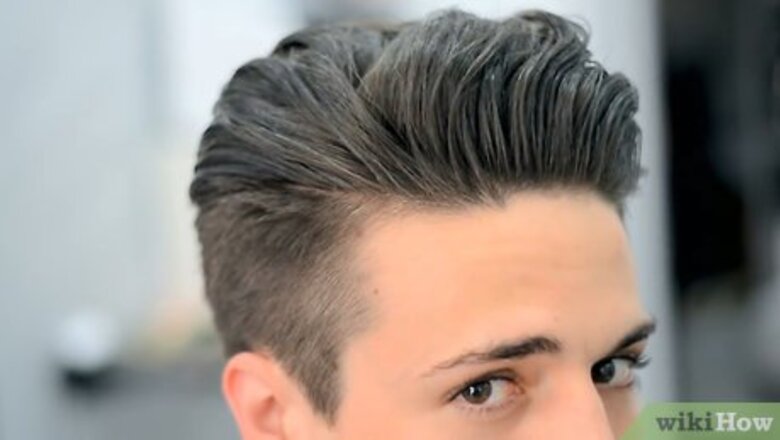
views
Getting the Right Haircut

Know what a quiff is. A quiff is when the front of your hair is held up so that it curves back towards your head. There is a "wall" of hair above your forehead, and none of your hair reaches down past your scalp. The size and style of your quiff can make it unique.

Bring a photograph or two of the look you want to your hairdresser. Go online and search for the kind of quiff you want, then show the person who cuts your hair so that they have a good idea of what you want. There are a lot of different quiffs out there, so it helps to know what you want ahead of time: Classic Quiff: Short on the sides and back, high in the front, this classic hairstyle has been famous since Elvis. Short Quiff: This short, clean cut has become popular with businessmen and executive types. It is short on the sides and tops with 1-2 inches of coiffed hair at most. The Pompadour: This is a big, wavy quiff, similar to James Dean or Johnny Cash's haircuts. Undercut: This modern cut is when you buzz the sides of your head almost completely, fading into light hair on top and a small, short quiff, like Adam Levine.
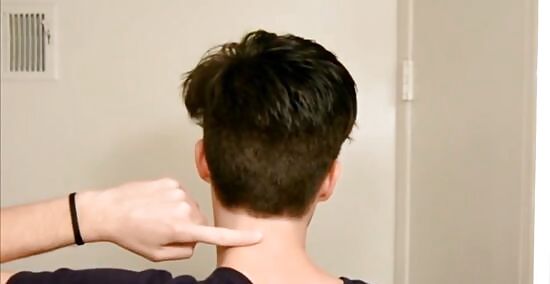
Keep the sides and back of your hair shorter than the top. The one thing all quiffs have in common is that the sides are kept short. This allows you to create the dramatic quiff in the middle of your head without hair from the sides getting in the way.
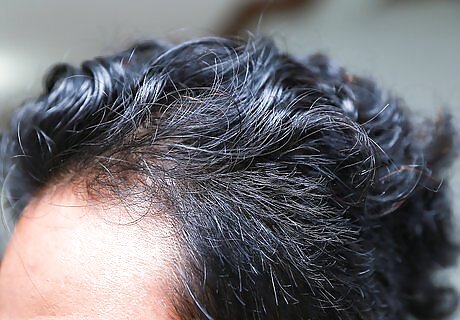
Know that it is hard to get a quiff with very curly or frizzy hair. Pretty much anyone can carry off a quiff with the right products and tools, though it’s probably best to avoid this style if you have thin, very curly, or ferociously frizzy hair. Straighter hair is easier to manipulate into the quiff and requires less product to style.
Note how the barber styles your hair. If you've never had a quiff before, watch the barber or hairdresser as they style your hair after the cut. More likely than not, they will: Get your hair damp. Comb your hair to the side. Apply a small amount of gel/wax with their fingertips. Gently sculpt the quiff with their fingers. Use a blow dryer to blow the quiff up and over, into shape. Finish your style with hairspray, pomade, or additional wax.
Doing a Quiff Hairstyle for Short Hair
Wash, shampoo, and condition your hair. Before you attempt to do a quiff hairstyle, it's important to wash your hair to remove any oils and add some volume.
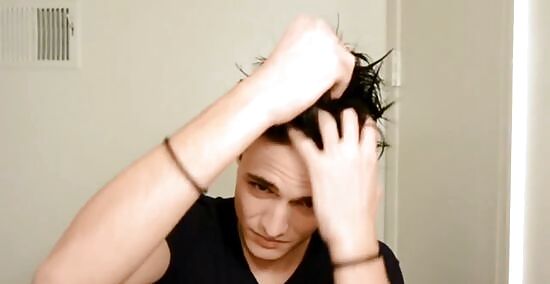
Dry your hair with a towel gently. Your hair should still be a little damp to the touch, but it should not still be dripping any water.
Apply a small bit of product to your fingertips. You want roughly a quarter-sized dollop of gel or wax in your fingers. Many people use too much, which weighs down your hair and makes it difficult to style. The best product for you will depend on your hair type: Sea salt spray gives a dry, matte hold which is good for soft, thick hair types. Wax gives a very firm, strong hold for difficult, unruly hair. Gel gives a lightweight yet firm hold which is good for fine hair. Use mousse for lightweight hold that will give you a lot of volume.
Use your fingers to distribute the gel or wax throughout the tips of your hair. Start applying your product root to tip so that the lower parts of your locks can support some volume. As you work, use your fingers to comb your hair to the front of your head.
Use a hair dryer and a brush to style your hair. Set your dryer to the highest temperature setting and the lowest speed – you can always increase the speed when you feel more confident. Using a vented brush, sweep the hair on the top part of your head (roughly 2cm above your temples) across to one side. At the same time follow the brush with your dryer. Direct the airflow through the vents in the brush and onto the hair, keeping the dryer approximately 3cm from the brush to avoid over-baking your hair. When your hair is 50% dry repeat the method on the other side, working in the opposite direction . As you dry, use your fingers to work the hair upwards and backwards, from the roots to the tips, in the direction you want the quiff to go (right or left). You can also use a denman or vent brush. The type of brush you use will make a difference in the finished style. Use a Denman brush if you want more of a rockabilly style, or a round brush if you want the style to be more rounded at the top.
Keep working the quiff into your desired shape until the hair feels completely dry. Lower the heat and use your brush to perfect your look to your liking. Don't continue using the hairdryer once your hair is dry, as your hair will become crisp and dried out.
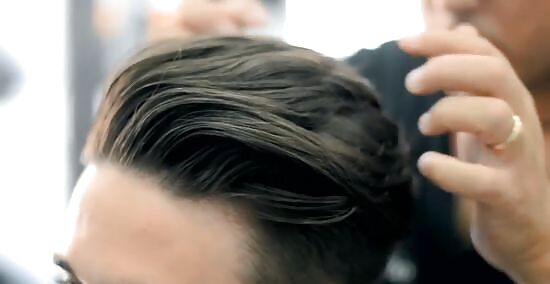
Smooth out any imperfections with some hair wax. Run your hands over the outside of the quiff (not through the hair) to give it some structure and smooth any flyaway hairs. If you have wax, you can use it to give you quiff a classic shine reminiscent of the movie O Brother, Where art Thou? Take some strong-hold hairspray and give the quiff a good spritz all over — this will help to maintain the volume and structure. For a more tousled, contemporary look, use wax to gently break up the ends of your hair. Twist each section just a little to add some definition. Depending on the look you're going for, you can take a small amount of gel or wax and use it to either pull out or slick back the shorter hair at the sides of your head.
Doing a Quiff for Long Hair
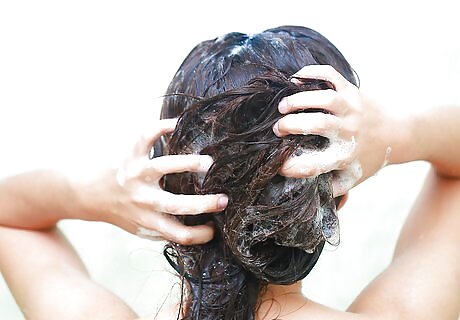
Wash your hair with volumizing shampoo. It's a good idea to wash your hair before attempting a quiff hairstyle. This gets rid of any oiliness and makes your hair easier to backcomb. Use a volumizing shampoo and conditioner in the shower — this will help to give your hair more texture and volume once dry. Blot your hair dry with a towel. Work a little volumizing mousse through the lengths, and blow dry your hair as straight as possible.
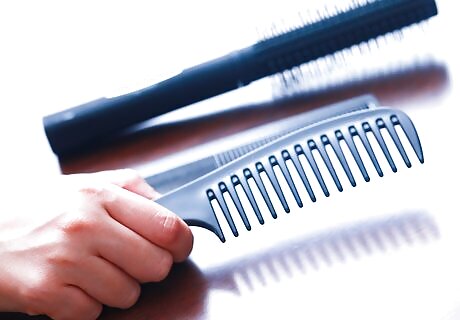
Section off the front part of your hair. Use a comb or your fingers to section off the front part of your hair for the quiff. Think of this section of hair like an upside-down triangle, with the two bottom points at your forehead and the top point at the top of your head. If you plan on leaving the rest of your hair down, slick back the sides with gel or pin them back with bobby pins. If you plan on putting the rest of your hair in a ponytail, twist the front section of hair around itself and temporarily secure with a bobby pin.
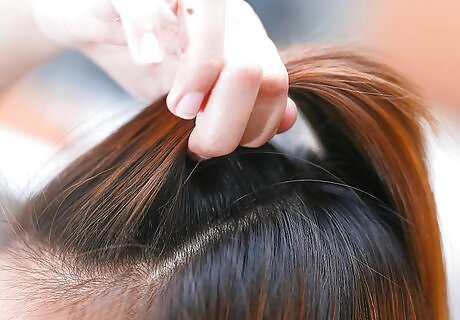
Make your ponytail. Once the front section of your hair is separated and secured, use a soft brush to smooth the rest of your hair back into a low ponytail (around the occipital bone) and tie tightly with an elastic. At this point you can decide whether you want the ponytail to look sleek or wispy. If you want the wispy look, pull out some feathery pieces of hair from around your ears and temples. If you want a sleeker effect, use some firm-hold hairspray to slick back the hair at the sides of your head and beneath the ponytail. Don't spray the top of your head just yet.

Backcomb the hair for the quiff. Unpin the front section of hair and comb it out to remove any tangles. Spritz the entire section of hair with a light layer of firm-hold hairspray. Working from the back to the front, take small sections of hair and start backcombing, using a fine-toothed comb. This is the most important step in achieving a perfect quiff. To backcomb the hair, hold a section of hair at the ends and lift it straight into the air, above your head. Place the comb at the halfway point between your head and your hand and tease the hair downwards, towards the scalp. Once you have finished with one section of hair, move onto the next and repeat the backcombing process. Keep going until you reach the hair at your forehead.

Smooth and secure the quiff. Once you have backcombed the entire front section of hair, you are ready to form your quiff. Don't worry if your hair looks like a bird's nest at this point — this is how it's supposed to look! Take a soft-bristled brush and lightly brush the surface of the hair back towards the ponytail. Try to get the hair on the outside of the quiff nice and smooth, but leave the backcombed hair underneath as undisturbed as possible — you don't want to undo all of your hard work! Gather the ends of the backcombed hair at the crown of your head and twist them once. To get more height in your quiff, push this twisted piece of hair forwards. Use your hands to ensure that the quiff looks even at the front. If you left the rest of your hair down, secure the twisted end of the quiff with a couple of bobby pins. If you put your hair in a ponytail, secure the twisted end to the existing ponytail using a second hair tie.
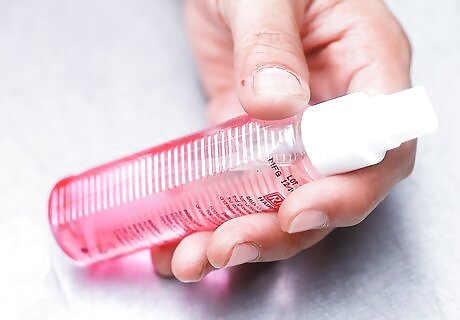
Hide the bobby pins or hair ties and finish with hairspray. Exposed bobby pins or hair ties can look untidy, so finish the look by hiding them beneath your hair. If your hair is down, take a small section of hair from the right of the bobby pins and cross it over the pins towards the left. Secure this section of hair with a small pin on the underside of the hair. Now take another section of hair from the left of the bobby pins and cross it over to the right. If your hair is in a ponytail, take a small section of hair from the underside of the ponytail and wrap it around the hair ties until they are no longer visible. Secure the end of the hair with a bobby pin, underneath the ponytail. Take your strong-hold hairspray and give the quiff a good spritz. Use your hand to smooth back any flyaway hairs from around the hairline. Finish with a little shine spray, and your quiff is good to go!



















Comments
0 comment